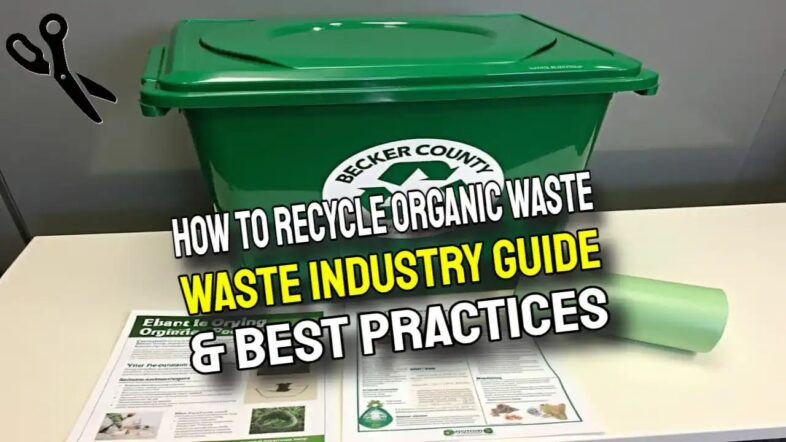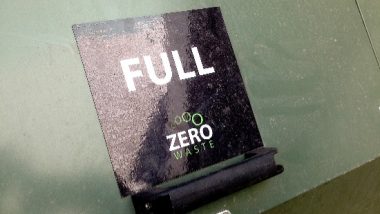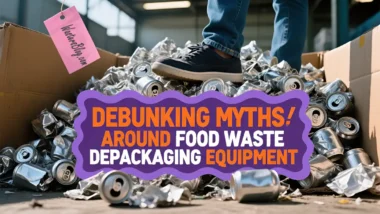There are just two ways to recycle organic waste. Either through municipal collection programs or by composting at home. Both methods use microorganisms to break down food scraps, garden prunings, and other organic materials into valuable compost or energy. For municipal recycling, take care to put your waste in a designated bin and follow your local council's guidelines on what to recycle and whether to use bags or place items loose. For home composting, create a pile or bin with a mix of “green” (nitrogen-rich) and “brown” (carbon-rich) materials, turn it and mix it each week or two, and keep it moist to decompose into nutrient-rich soil.
Key Takeaways for How to Recycle Organic Waste
- Recycling organic waste can reduce greenhouse gas emissions by up to 80% compared to landfilling, making it one of the most impactful sustainability practices available to businesses and households.
- Effective organic waste recycling requires proper sorting systems, clear signage, and regular education to prevent contamination issues that can compromise the entire process.
- Different organic recycling methods like traditional composting, vermicomposting, and anaerobic digestion provide options for various settings from apartments to industrial facilities.
- Businesses implementing organic waste recycling programs can typically reduce waste disposal costs by 20-30% while creating valuable soil amendments.
- SLR Consulting, a leading environmental consulting firm, helps organisations design customised organic waste recycling programs that maximise efficiency and environmental benefits.
Organic waste makes up nearly one-third of what we throw away daily. When sent to landfills, these materials don't just take up space – they actively generate methane, a greenhouse gas 25 times more potent than carbon dioxide. By implementing proper organic waste recycling practices, you can transform this environmental liability into a valuable resource.
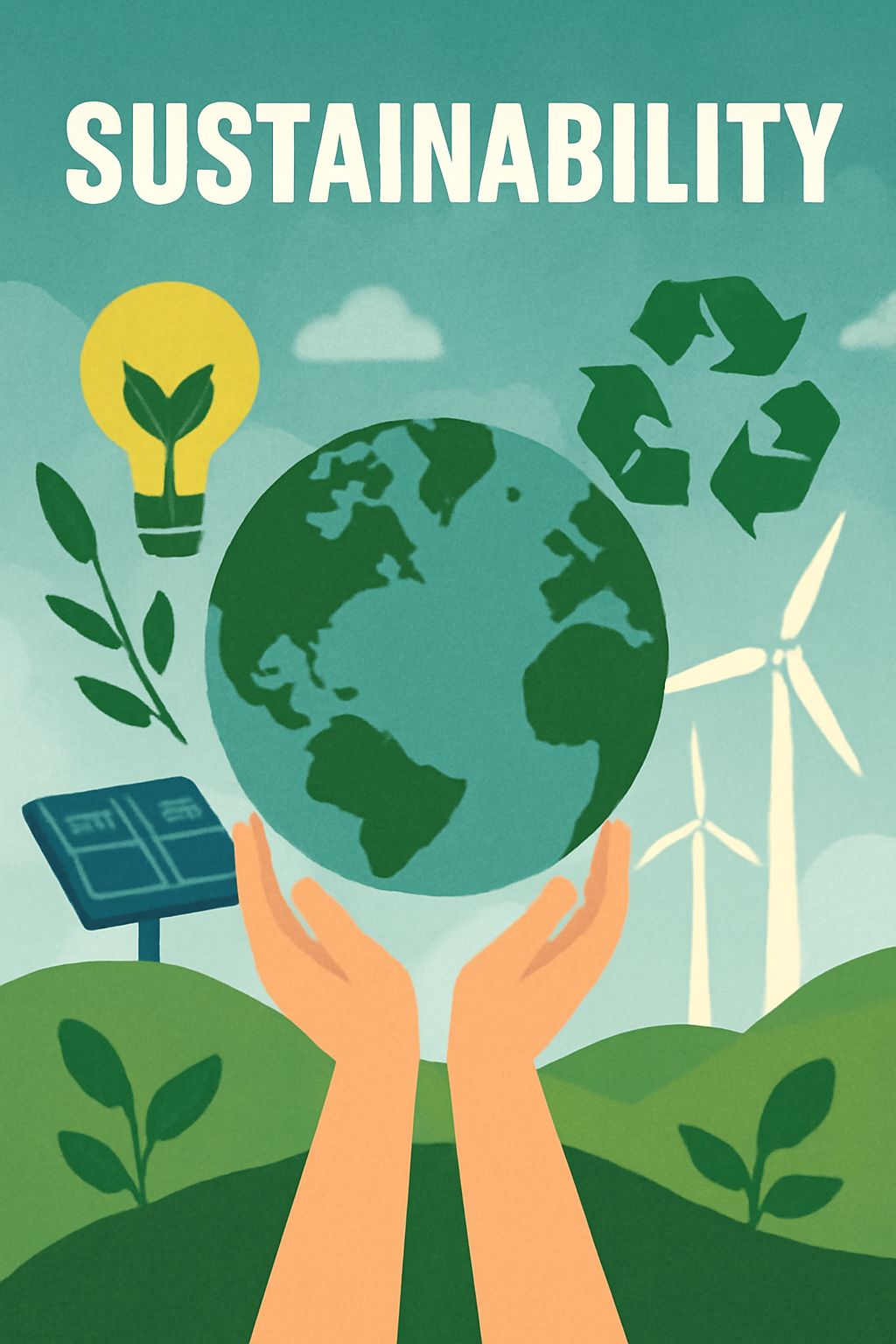
Why Recycling Organic Waste Matters
The journey toward sustainability begins with understanding why organic waste deserves special attention. Unlike conventional recycling that focuses on materials like plastic and paper, organic recycling closes the loop in our food systems and landscaping practices, returning vital nutrients to the soil rather than sealing them in landfills. This creates a circular economy where waste becomes a resource, benefiting both environmental and economic systems.
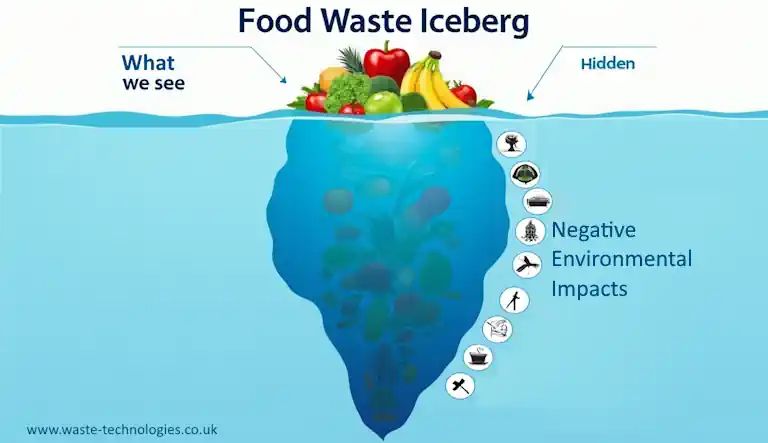
Environmental Impact of Organic Waste in Landfills
When organic materials decompose in landfills, they do so anaerobically—without oxygen. This process generates significant amounts of methane, a greenhouse gas that contributes dramatically to climate change. According to EcoRecycle, a single ton of food waste in a landfill produces roughly 4.2 tons of CO2 equivalent in greenhouse gas emissions. Beyond climate impacts, decomposing organics create leachate—a toxic liquid that can contaminate groundwater if not properly managed. The environmental cost extends to wasted resources, from the water and energy used to grow food to the fuel burned transporting waste that could have been processed locally.
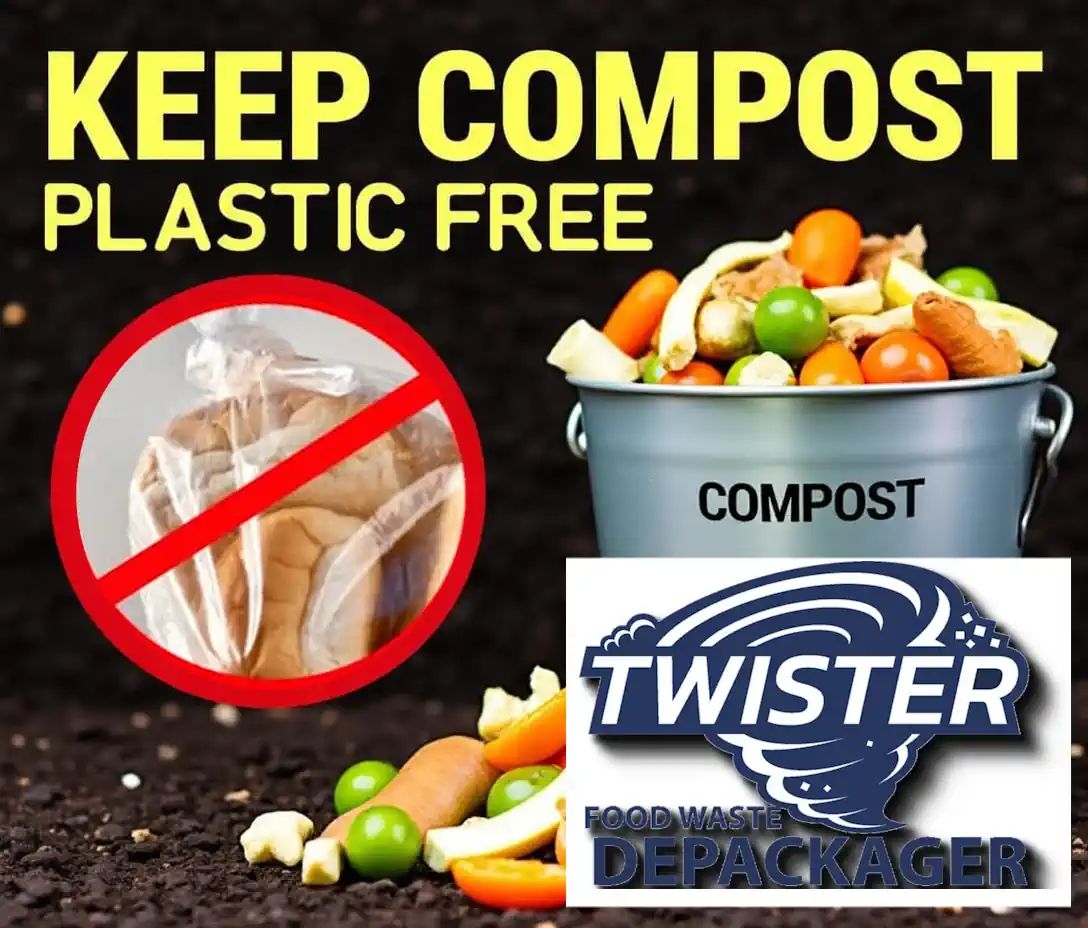
Resource Recovery Potential
The beauty of organic waste lies in its transformation potential. When properly recycled, these materials become compost or digestate—nutrient-rich soil amendments that improve soil structure, water retention, and plant health. These products reduce the need for chemical fertilisers, support carbon sequestration in soils, and can help restore degraded landscapes. Commercial composting operations can process diverse organic materials at scale, creating economically valuable products while diverting waste from landfills.
Additionally, through technologies like anaerobic digestion, organic waste can generate renewable energy in the form of biogas, which can be used for electricity, heating, or as vehicle fuel. This dual benefit of creating both energy and soil amendments represents one of the most complete resource recovery systems available in modern waste management.
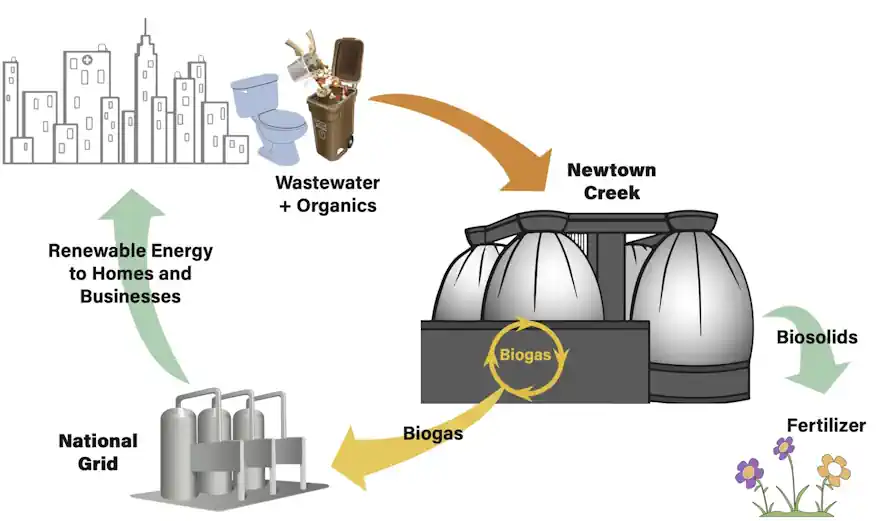
“Resource Recovery – NYC DEP” from www.nyc.gov and used with no modifications.
Regulatory Trends Driving Organic Recycling
Governments worldwide are recognising the importance of diverting organic waste from landfills. Municipalities and states across North America are implementing organic waste bans, mandatory composting requirements, and zero-waste initiatives. In California, SB 1383 requires businesses to separate organic waste, while Massachusetts bans the disposal of commercial food waste exceeding one ton per week. The European Union has established targets for member states to reduce biodegradable municipal waste going to landfills by 65% compared to 1995 levels.
These regulatory frameworks create both compliance obligations and opportunities for organisations to get ahead of mandates by developing effective organic waste recycling programs now. Forward-thinking businesses are finding that early adoption of comprehensive organic waste management systems positions them favorably with consumers, regulators, and their bottom line.
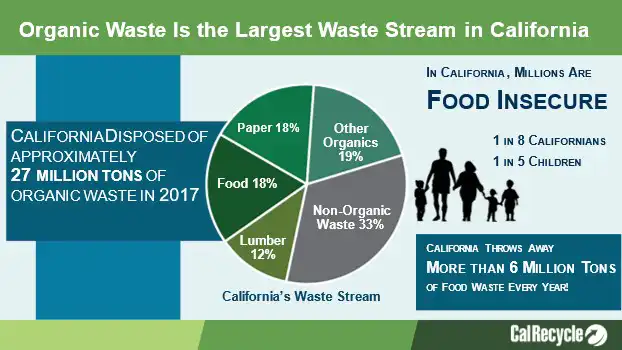
“Mandatory Residential Organics Waste …” from recyclemore.com and used with no modifications.
Types of Organic Waste You Can Recycle
Understanding what materials qualify as organic waste is the first step toward effective recycling. The term encompasses a wide range of biodegradable materials that can be broken down through natural processes. Recognising these different categories helps in designing appropriate collection systems and choosing the right processing methods.
Food Scraps and Kitchen Waste
Food waste represents one of the most valuable—yet challenging—organic waste streams. This category includes fruit and vegetable trimmings, coffee grounds, eggshells, bread products, and leftovers.
In many commercial composting facilities, meat, bones, and dairy products can also be accepted, though these require higher-temperature processing to break down properly and eliminate pathogens. Commercial kitchens, restaurants, and food processors generate significant volumes of food waste that, when recycled, can dramatically reduce their waste management costs and environmental footprint.
Pre-consumer food waste (trimmings and preparation scraps) tends to be easier to separate and less contaminated than post-consumer waste (plate scrapings). For optimal recycling results, these streams should be collected separately whenever possible. To learn more about the landfill alternative, you can explore what happens to food waste in landfills.
Yard Trimmings and Green Waste
Landscaping waste forms another major organic waste category that includes grass clippings, leaves, pruned branches, weeds, and other plant materials. These carbon-rich materials provide essential structure and balance to compost mixes. Municipal yard waste collection programs have become common in many regions, with seasonal collection intensifying during fall leaf season and spring pruning periods.
Vermicomposting for Indoor Spaces
Vermicomposting harnesses the digestive power of earthworms to transform food scraps into nutrient-rich castings. This method is ideal for apartments, offices, and schools with limited outdoor space.
A typical worm bin requires red wigglers (Eisenia fetida), which can process half their weight in food scraps daily. These systems operate at room temperature, produce minimal odour when properly maintained, and create worm castings with up to five times the nitrogen, phosphorus, and potassium of ordinary soil.
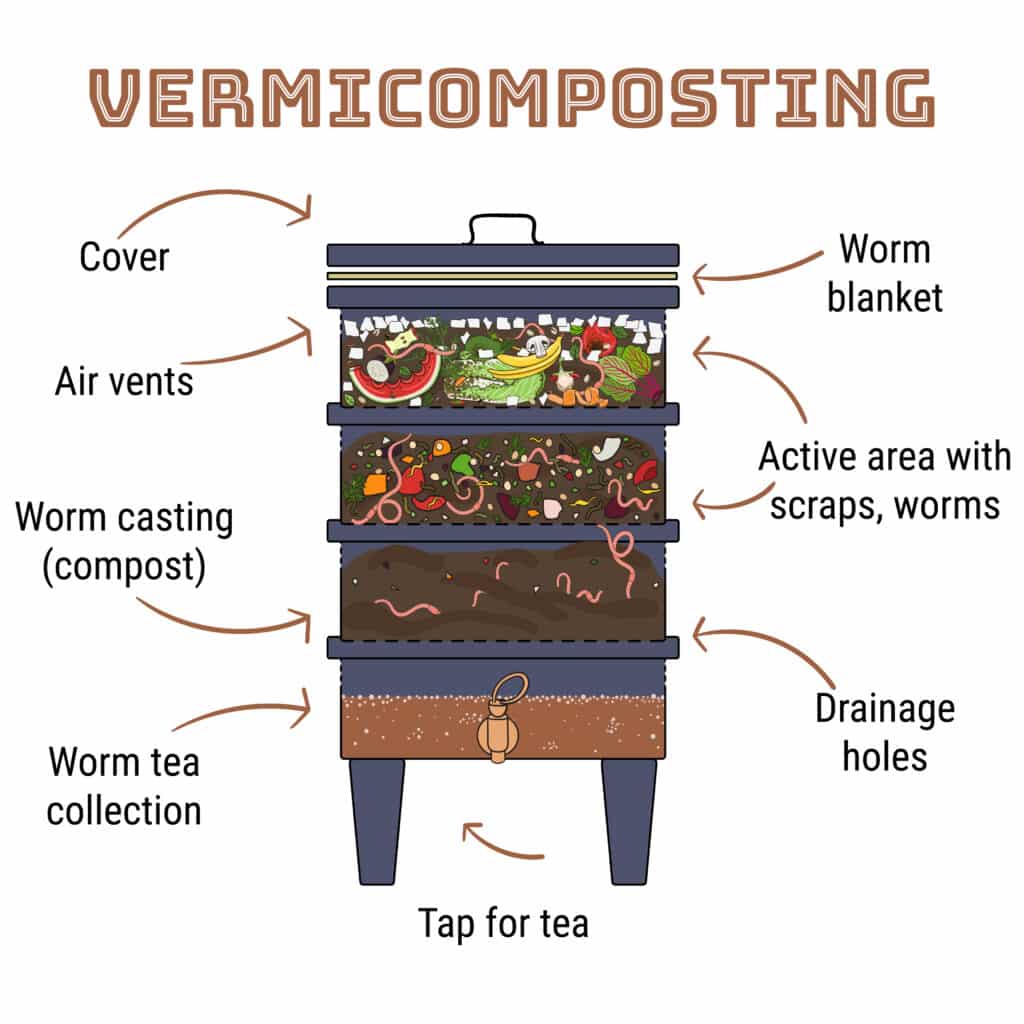
“Vermicomposting: Let's Get Started …” from www.timetorecycle.org and used with no modifications.
Bokashi Fermentation System
Bokashi represents an anaerobic fermentation process originating in Japan that uses beneficial microorganisms to pre-process organic waste. Unlike traditional composting, bokashi can handle all food wastes, including meat, dairy, and oils.
The process involves layering food waste with bokashi bran (wheat bran inoculated with effective microorganisms) in an airtight container. Within 2-4 weeks, the material ferments rather than decomposes, preserving nutrients and creating a nutrient-rich pre-compost that can be buried in soil or added to a traditional compost system for final breakdown.
If you're interested in how food waste impacts the environment, learn more about food waste in landfills.
Large-Scale Organic Recycling Technologies
When waste volumes exceed what backyard systems can handle, industrial-scale solutions become necessary.
These technologies process organic waste efficiently while controlling environmental factors like temperature, moisture, and oxygen levels to accelerate decomposition and ensure pathogen destruction.
Large-scale facilities can process diverse feedstocks from municipal collections, agricultural operations, and commercial generators.
The choice of technology depends on available space, capital investment capabilities, feedstock characteristics, and desired end products. Each approach offers unique advantages in processing efficiency, space requirements, and output quality.
Industrial Composting Facilities
Industrial composting facilities handle large volumes of organic waste using mechanical systems for turning, aeration, and monitoring.
These operations typically process between 10,000 to 200,000 tons of organic material annually, employing specialised equipment like windrow turners, screening systems, and temperature monitoring probes.
Materials cycle through high-temperature phases (reaching 131-170°F) that kill pathogens and weed seeds, meeting EPA and state regulatory requirements for pathogen reduction.
Modern facilities incorporate sophisticated odour control systems, including biofilters, negative air pressure buildings, and carefully managed process controls.
The finished compost undergoes screening to remove contaminants and is classified by particle size, resulting in commercial-grade products used in landscaping, agriculture, and erosion control. The entire process typically takes 3-6 months from receipt to finished product.
Anaerobic Digestion Systems
Anaerobic digestion represents a biological process where microorganisms break down organic materials without oxygen, producing biogas (primarily methane and carbon dioxide) and nutrient-rich digestate.
These systems excel at processing wet, high-nitrogen materials like food waste and manure, generating renewable energy while recycling nutrients. Modern anaerobic digesters can process between 25-250 tons of organic waste daily, with biogas production ranging from 80-140 cubic meters per ton of food waste processed.
In-Vessel Composting
In-vessel composting contains the decomposition process within fully enclosed drums, tunnels, or containers. This technology allows precise control over temperature, moisture, and aeration while minimising odours and potential for vector attraction.
The enclosed nature makes these systems ideal for urban areas or facilities processing potentially sensitive materials like biosolids or animal byproducts.
The accelerated decomposition in these systems can reduce processing time to 2-4 weeks for the active phase, followed by a curing period.
Many facilities incorporate automated monitoring systems that adjust airflow, moisture, and turning frequency based on real-time temperature and oxygen readings. This technology typically requires higher capital investment but offers benefits in reduced labour, space requirements, and process control.
![]()
“Large-Scale In-vessel Food Waste Composting …” from www.biocycle.net and used with no modifications.
Aerated Static Pile Methods
Aerated static pile (ASP) composting uses blowers to force or draw air through stationary compost piles, eliminating the need for mechanical turning while maintaining aerobic conditions.
This approach balances the efficiency benefits of industrial systems with lower capital costs than fully enclosed vessels.
The piles, typically 6-8 feet high and constructed over perforated pipes, can be covered with finished compost or specialised fabrics to maintain heat, control odours, and protect from precipitation.
ASP systems can process a complete composting cycle in 3-5 months with minimal labour requirements once the initial pile is constructed. The reduced handling makes this method particularly suitable for materials that might create bioaerosols or odours during turning, such as biosolids or food waste.
Modern ASP systems often incorporate programmable blowers that adjust airflow based on temperature feedback, optimising microbial activity while conserving energy.
Best Practices for Businesses and Institutions
Organisations seeking to implement effective organic waste recycling programs need systematic approaches that address their specific operational contexts. Success hinges on understanding waste streams, engaging stakeholders at all levels, and developing infrastructure that makes proper sorting intuitive.
Facilities that achieve high diversion rates typically approach organic recycling as a holistic system rather than an isolated waste management tactic.
Effective programs begin with leadership commitment and clear policy directives that establish organic waste recycling as an organisational priority.
This top-down support ensures necessary resources—from staff time to equipment investments—are allocated appropriately. Middle managers and frontline staff must understand not just what to do but why it matters, connecting daily actions to broader environmental and economic benefits.
Cross-functional teams, including facilities management, procurement, operations, and sustainability roles, create the most effective implementation strategies.
This collaboration ensures that waste reduction efforts extend beyond disposal to include upstream purchasing decisions and process modifications that minimise waste generation.
Case Study: Hospital Food Service Transformation
A 350-bed hospital in Portland reduced its food waste by 47% and saved $93,000 annually through a comprehensive organic waste program. Their multi-faceted approach included:
- Pre-consumer waste tracking using digital scales and logging software
- Redesigned patient meal ordering to reduce overproduction
- Staff training on proper food storage to extend shelf life
- Source-separated collection systems in kitchen and cafeteria areas
- Partnership with a local composter for weekly collection
The hospital now diverts 112 tons of organic waste annually from landfills while producing significantly less waste through improved operational efficiency.
Organisations should approach organic waste recycling with a waste hierarchy mindset—prioritising reduction first, followed by donation of edible food, then recycling of inedible portions. This comprehensive strategy maximises both environmental and financial benefits by addressing the full lifecycle of organic materials rather than focusing solely on end-of-life management.
Conducting Waste Audits
Waste audits provide the essential baseline data needed to design effective organic recycling programs. A comprehensive audit involves physically sorting, weighing, and categorising representative samples of waste to quantify organic fractions and identify contamination issues.
Audits should examine waste from different functional areas separately (e.g., kitchen prep versus post-consumer dining areas) to pinpoint specific improvement opportunities. The resulting data helps organisations determine appropriate bin sizes, collection frequencies, and education priorities while establishing metrics against which to measure future progress. Professional auditors typically photograph waste composition to create visual training materials that improve future sorting behaviour.
1. Source Separation Strategies
Effective source separation represents the foundation of successful organic recycling programs. The key principle involves making correct disposal as convenient as possible by strategically placing collection bins at points of waste generation.
Colour-coding bins consistently throughout facilities (typically green for organics) creates visual shortcuts that improve sorting accuracy. High-traffic areas benefit from bin monitors during initial program phases to provide real-time guidance.
Organisations should consider the specific characteristics of their organic waste stream when selecting bin types—for example, food-heavy environments require leak-proof containers with lids, while yard waste collection might use more open systems. Regular assessment of contamination levels helps refine bin placement and signage to address problem areas.
2. Staff Education Programs
Comprehensive education transforms organic recycling from a facilities initiative to an organisational culture. Effective training programs include both initial launch communications and ongoing reinforcement through multiple channels. Visual aids showing exactly what belongs in organic collection bins prevent confusion, particularly when specific materials (like compostable serviceware) are accepted.
Training should address common misconceptions about composting and explain the consequences of contamination on the entire waste stream. Custodial and facilities staff require specialised training on collection procedures, contamination monitoring, and troubleshooting common issues.
Organisations with high staff turnover should incorporate organic waste sorting instructions into new employee onboarding to maintain program consistency despite personnel changes.
3. Partnering with Local Processors
Building strong relationships with organic waste processors creates program stability and optimisation opportunities.
Site visits to composting or anaerobic digestion facilities help program managers understand exactly what materials are acceptable and how contamination affects operations. These partnerships should include clear communication channels for feedback on load quality and contamination issues.
Many processors offer educational materials, signage, and even staff training to improve source separation. Organisations should thoroughly evaluate processor capabilities, including permitted materials, collection container options, service reliability, and reporting metrics.
The most successful partnerships involve processors in program design phases to align collection systems with processing requirements, creating seamless transitions from generation to processing. For more information, you can refer to the Managing and Reducing Wastes Guide.
4. Tracking and Reporting Progress
Data-driven management enables continuous improvement in organic recycling programs. Organisations should establish consistent measurement protocols that track diverted weights, contamination rates, and cost impacts.
Waste hauliers and processors can typically provide weight tickets for each collection, forming the foundation of diversion metrics. More sophisticated programs incorporate these measurements into sustainability reporting frameworks that calculate greenhouse gas emissions avoided through organic waste diversion.
Regular benchmarking against industry peers or organisational baselines helps identify both successes and improvement opportunities.
Visual dashboards shared with staff reinforce program importance and create healthy competition between departments or locations. Some organisations incorporate organic waste diversion metrics into performance reviews for managers or departments to emphasise organisational commitment.
| Metric | Measurement Method | Typical Target | Reporting Frequency |
|---|---|---|---|
| Diversion Rate | Weight diverted ÷ Total waste | 30-50% for most facilities | Monthly |
| Contamination Rate | Visual audit or processor feedback | <5% non-organic material | Weekly during launch; Monthly ongoing |
| Cost Savings | Reduced landfill fees – Program costs | 10-30% net reduction | Quarterly |
| Participation Rate | Areas/departments actively separating | 90-100% participation | Monthly during implementation |
The most valuable metrics combine quantitative measurements with qualitative assessments of program functioning.
Staff surveys can identify pain points in the collection system, while trend analysis helps identify seasonal variations requiring program adjustments. This comprehensive approach to measurement creates accountability while providing the information needed for continuous improvement.
5. Cost-Saving Opportunities
Well-designed organic recycling programs typically deliver a positive return on investment through multiple financial mechanisms.
Primary savings come from reduced waste disposal fees, as composting or anaerobic digestion services generally cost 15-30% less than landfill tipping fees in regions with developed organics infrastructure. Volume-based waste collection contracts can yield immediate savings when organic diversion reduces the size or frequency of landfill-bound container service.
Food service operations often discover significant cost savings upstream when tracking systems reveal overproduction patterns, allowing menu planning and purchasing adjustments that reduce food costs while simultaneously decreasing waste.
Some facilities even generate revenue by selling finished compost or using it in landscape maintenance, eliminating purchased soil amendment costs. For more ideas on reducing waste and saving money, consider these practical strategies.
Challenges and Solutions in Organic Recycling
Despite its environmental benefits, organic waste recycling presents distinct operational challenges that require thoughtful solutions. Recognising and proactively addressing these hurdles can mean the difference between program success and failure.
Most difficulties stem from the biological nature of organic materials, which begin decomposing immediately after being discarded, creating potential issues with odours, vectors, and space constraints.
Successful programs incorporate feedback loops that allow rapid identification and resolution of problems before they undermine participant confidence.
This responsiveness demonstrates organisational commitment to making organic recycling work despite inevitable initial challenges.
Many organisations establish cross-functional troubleshooting teams that can address issues from multiple perspectives—facilities management, user experience, and processing partnerships. This collaborative approach transforms challenges into opportunities for program refinement.
Managing Odours and Pests
The decomposition of organic materials naturally produces odours and attracts pests if not properly managed. Effective odour control begins with appropriate collection containers—typically solid receptacles with tight-fitting lids rather than open bins. Collection frequency should align with climate conditions, with more frequent service during warmer months when decomposition accelerates.
Adding a layer of high-carbon materials like wood chips, shredded paper, or finished compost to collection bins after each deposit helps absorb moisture and odours while creating unfavourable conditions for flies.
In larger operations, refrigerated collection areas for food waste can virtually eliminate odour issues while preserving material quality for processing. Staff training should emphasise keeping the collection area floors and bin exteriors clean to prevent attracting pests to residual organic material.
Handling Contamination Issues
Contamination represents the single greatest threat to organic recycling program success, potentially rendering entire loads unprocessable or degrading finished compost quality. Common contaminants include plastic bags, packaging, disposable gloves, and conventional serviceware mistaken for compostable alternatives.
Effective contamination management combines preventive education with monitoring and feedback systems. Clear, image-based signage showing specifically what can and cannot be composted eliminates confusion, particularly when paired with physical examples in display cases near collection points.
Regular “lid-flipping” inspections by trained staff catch contamination problems early while identifying specific departments or areas needing additional education.
Some facilities implement recognition programs that positively reinforce proper sorting rather than focusing solely on contamination problems.
For more comprehensive strategies, check out this Best Practices Toolkit on managing food waste.
Seasonal Variations in Waste Streams
Organic waste generation follows predictable seasonal patterns that require program adjustments throughout the year. Fall typically brings surges in yard waste as leaves and garden cleanups generate high volumes of carbon-rich materials.
Summer sees increases in food waste from fresh produce consumption and outdoor events, while institutional settings experience dramatic changes during breaks or holiday periods.
Effective programs anticipate these fluctuations by scheduling additional collections during peak periods, arranging for supplemental containers, and adjusting staffing levels to maintain service quality.
Some municipalities and campuses implement specialised collection events for seasonal materials like pumpkins after Halloween or Christmas trees after the holidays, creating educational opportunities while capturing high-volume seasonal organic wastes.
Space Constraints
Limited space presents a significant challenge for organic waste collection, particularly in dense urban environments, historic buildings, or facilities designed without waste separation in mind.
Creative solutions include using vertical space with stackable collection bins, implementing more frequent collections to reduce storage requirements, and identifying underutilised areas that could be repurposed for collection.
Some facilities address space limitations by creating centralised collection hubs rather than attempting to place organic bins in every possible generation point.
In food service operations, counter-mounted collection containers can capture preparation scraps without consuming floor space.
Office environments can utilise desk-side mini-bins for food scraps that employees empty into central collection points. Specialised compaction equipment for organic materials can reduce volume by 50-70%, significantly decreasing space requirements, though care must be taken to maintain material quality for processing.
For space-constrained operations producing significant organic waste, off-site processing often provides the most viable solution.
Collection partners can provide various container options designed for tight spaces while offering the frequency of service needed to prevent overflow conditions. The key principle remains making proper disposal convenient enough that participants will consistently use the system despite space limitations.
Space-Saving Solutions for Different Settings
- Restaurants: Under-counter collection bins in prep areas, slim-profile containers along service lines
- Offices: Centralized collection hubs in break rooms, countertop containers for coffee grounds
- Apartments: Balcony-friendly collection bins, community garden drop-off stations
- Schools: Mobile collection stations that move to where waste is generated
- Healthcare: Specialized slim containers designed for limited utility room spaces
Using Finished Compost and Digestate
The true value of organic waste recycling emerges in the utilisation of the resulting products. Whether compost from aerobic processes or digestate from anaerobic systems, these materials close the nutrient loop by returning valuable organic matter to soils.
Organisations can maximise program benefits by incorporating these products into their operations, creating visible demonstrations of the circular economy in action. From public parks using locally-produced compost to food service operations growing herbs in compost derived from their kitchen scraps, these applications create powerful sustainability narratives that reinforce program importance to participants.
Soil Amendment Applications
As a soil amendment, finished compost improves soil structure, enhances water retention, and provides slow-release nutrients that support plant health. Application rates typically range from 1-3 inches incorporated into existing soil, with higher rates appropriate for severely depleted soils.
Commercial landscaping operations can reduce irrigation requirements by 30-50% and fertiliser applications by 50-100% when compost is properly incorporated into soils. The microbial diversity in finished compost contributes to soil health by supporting beneficial organisms that suppress plant diseases and create soil structures that improve root development.
Beyond new planting areas, top-dressing existing landscapes with ¼-½ inch of compost annually maintains soil health while sequestering carbon.
This practice creates visible connections between waste diversion efforts and landscape beautification, particularly when interpretive signage explains how today's food scraps become tomorrow's garden nutrients.
Organisations with substantial landscapes can achieve significant cost savings by reducing purchased fertilisers, soil amendments, and even pesticides as soil health improves through regular compost application.
Landscaping and Gardening Uses
Compost serves diverse landscaping applications beyond basic soil amendment, including as a component in specialised growing media, erosion control blankets, and living roof substrates.
Custom blends incorporating compost with other materials create ideal growing environments for specific applications—adding sand for athletic field topdressing or pine bark for acid-loving plant beds.
Compost-based mulches applied at 2-3 inch depths around trees and shrubs suppress weeds, moderate soil temperature, and slowly release nutrients as they break down further.
Organisations can showcase finished compost in high-visibility demonstration gardens that highlight both aesthetic benefits and sustainable practices.
Employee garden programs using site-derived compost create hands-on connections to waste diversion efforts while producing fresh vegetables or flowers that further enhance campus environments.
Some facilities create “soil health trails” with interpretive stations explaining how organic waste recycling contributes to sustainable landscapes, water conservation, and carbon sequestration—transforming routine landscaping into educational opportunities.
Agricultural Benefits
Agricultural applications represent the largest potential market for recycled organics, with benefits extending well beyond nutrients. Farmers using compost or digestate report improved drought resistance, reduced erosion, better nutrient retention, and enhanced crop quality.
Application rates range from 2-10 tons per acre, depending on soil conditions, crop requirements, and compost characteristics.
The slow-release nature of compost-derived nutrients reduces runoff concerns while building long-term soil health.
Organisations with dining services can create powerful closed-loop stories by sourcing food from farms using their compost, demonstrating circular economy principles in action and creating marketing opportunities for both the organisation and farm partners.
Marketing Recycled Products
Successful marketing of finished compost or digestate requires understanding distinct customer segments and their specific needs. Landscapers seek consistent product quality, seasonal availability, and performance data showing benefits over conventional products. Homeowners respond to attractive packaging, clear application instructions, and assurances regarding safety and odour characteristics.
Effective marketing emphasises both product performance and sustainability stories—how many tons of waste were diverted to create the product, what emissions were avoided, and how the circular economy benefits local communities. Many facilities offer educational workshops on compost use, creating informed customers while building brand loyalty.
Organisations that distribute compost derived from their own waste streams should develop informational materials explaining their recycling process, testing protocols, and suggested applications, transforming a waste management necessity into a brand-enhancing sustainability initiative.
Taking Your Organic Recycling Program to the Next Level
Successful organic waste recycling programs continuously evolve beyond basic implementation to achieve deeper waste diversion, broader participation, and stronger community connections.
Advanced programs typically expand both upstream and downstream—addressing waste prevention while developing innovative applications for finished products.
This holistic approach transforms organic waste management from a compliance requirement into a centrepiece of sustainability strategy with multiple environmental, social, and economic benefits.
Organisations demonstrating leadership in this space often become regional resources, sharing expertise with other institutions beginning their organic recycling journeys and advocating for infrastructure development that supports broader adoption.
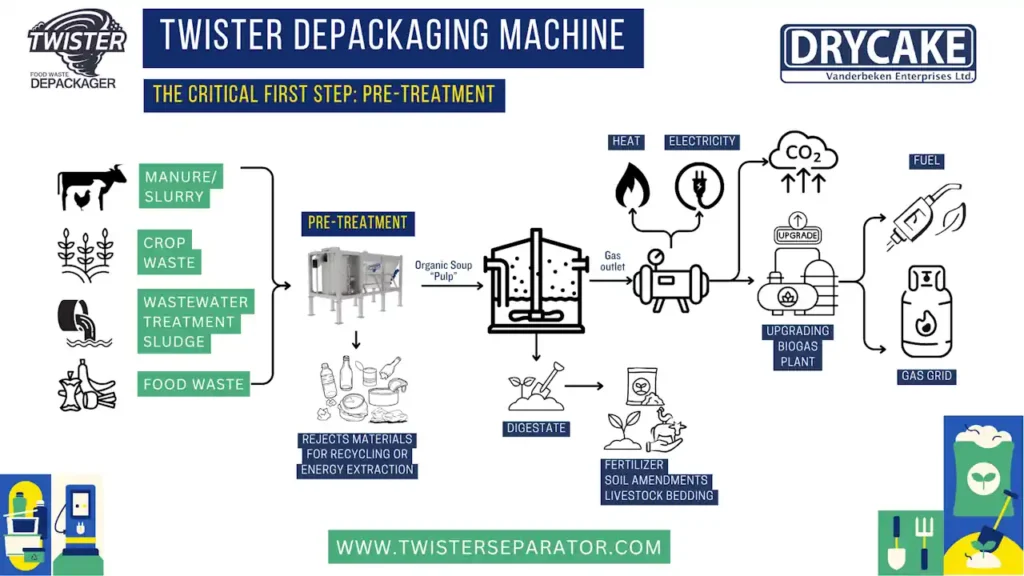
Setting Meaningful Goals
Advanced organic recycling programs establish ambitious yet achievable goals that drive continuous improvement. Beyond simple diversion percentages, comprehensive goal frameworks address quality metrics like contamination rates, participation breadth across departments, and upstream reduction of excess materials.
The most effective goals incorporate specific timeframes and quantitative targets—for example, “reduce contamination to below 3% by Q3” or “achieve 90% participation in administrative buildings by year-end.”
Clearly articulated goals create accountability while providing direction for program development efforts. For more insights on waste management, check out this best practices guide.
Goals should align with broader organisational sustainability commitments around carbon reduction, operational efficiency, and community engagement. This alignment elevates organic waste recycling from a facilities management function to a strategic sustainability initiative worthy of executive attention and resource allocation.
Regular progress reviews against established goals create opportunities to celebrate successes, identify barriers requiring additional resources, and refine approaches based on implementation experience. The best programs establish both short-term operational targets and longer-range aspirational goals that inspire innovation and commitment.
Measuring Environmental Impact
Sophisticated organic recycling programs quantify their environmental benefits through metrics that resonate with diverse stakeholders.
Greenhouse gas emissions avoided represent perhaps the most powerful metric, typically calculated using EPA's Waste Reduction Model (WARM) or similar tools that translate diversion tonnage into carbon dioxide equivalent emissions prevented.
These calculations consider both avoided landfill methane and the carbon sequestration benefits of returning organic matter to soils, creating compelling climate action narratives.
Beyond carbon impacts, a comprehensive assessment includes water conservation benefits from compost-amended soils, reduced fertiliser requirements and associated manufacturing impacts, and watershed protection through improved stormwater management.
These broader environmental metrics connect organic recycling to water quality, biodiversity, and resource conservation objectives.
Organisations should develop infographics and other visual tools that translate technical measurements into accessible impacts—for example, showing emissions savings in terms of cars removed from roads or compost benefits as gallons of water conserved during landscape irrigation.

Communicating Success Stories
Effective communication transforms organic recycling from a behind-the-scenes operation into a visible sustainability success story.
The most compelling narratives focus on full-circle examples—cafeteria scraps becoming campus garden compost that grows herbs for those same cafeterias, or landscape trimmings returning to beautify the same grounds as finished mulch. These stories should feature both environmental metrics and human elements—the staff champions who drive program success, the community partnerships created, and the changed perceptions around “waste” materials.
Organisations should leverage multiple communication channels, including sustainability reports, social media, facility signage, and community presentations, to reach diverse audiences with tailored messages that connect organic recycling to issues they specifically value, whether climate action, operational efficiency, or community resilience building through local resource cycling.
FAQ: How to Recycle Organic Waste
Proactively addressing common questions helps ensure successful organic waste recycling programs and builds confident participation. How to Recycle Organic Waste:
What should never be included in Organic Waste Recycling?
To prevent contamination and equipment damage, always exclude these materials from your organic waste stream:
- All Plastics: Including bags marketed as “biodegradable” (unless certified compostable). Plastics fragment into microplastics, contaminating the final product.
- Glass and Metal: These do not decompose and can damage processing equipment.
- Hazardous Materials: (e.g., paints, cleaners). They kill beneficial microbes and introduce toxins.
- Chemically Treated Wood.
- Large Amounts of Cooking Oil/Grease.
Always check your local processor’s guidelines, as acceptance rules vary.
How long does it take to turn Organic Waste into usable compost?
The timeline for organic waste breakdown depends on the method:
Can meat and dairy be safely included in Organic Waste Recycling?
Yes, in commercial systems; generally no, in home systems.
- Industrial Facilities: Commercial-scale systems can safely process these materials by achieving and maintaining high temperatures required to eliminate pathogens.
- Home Composting: It’s usually recommended to exclude meat, bones, and dairy, as home piles rarely reach the necessary sustained high heat and can attract pests.
What's the difference between composting and Anaerobic Digestion (AD)?
Both are biological methods for organic waste recycling, but they produce different outputs:
How do I reduce odours in my Organic Waste collection system?
Effective odour control is key to successful organic waste recycling:
- Use Containers with tight-fitting, leak-proof lids.
- Avoid Direct Sunlight: Store containers in a cool, shaded area to slow decomposition.
- Use Carbon Additives: Sprinkle materials like wood shavings or shredded paper over food scraps to absorb moisture and odours.
- Clean Containers Regularly with mild soap or vinegar.
- Drain Excess Liquids from food scraps before disposal.
By implementing these practices, you can maximise the value of your organic waste while promoting a cleaner, more sustainable resource recovery system.

